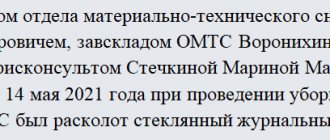Definition of the term
Intention is interpreted as one of the types of guilt and is directly opposite in its meaning to the term “negligence”. This form requires a person to understand his actions and how they affect others. Both in regulations and in real life, this is the most popular type of guilt.
Intention is a form of guilt.
Art. 25 of the Criminal Code of the Russian Federation indicates that only that crime is intentional, which was committed for a specific purpose, that is, the citizen foresaw the possibility of its occurrence.
Types of intent
There are two types that are accepted and enshrined in the legislation of almost all countries of the world. Let's talk about the differences between them and their features.
Straight
This type of intent is characterized as follows: the citizen knows about the negative consequences of his action, wants them and consciously allows them.
The desire to attack is the desire of an individual to achieve a set criminal goal, which is contrary to moral norms, as well as the provisions of the law.
All crimes and attempts to commit them or simple preparation for this can take place with this type of intent.
Indirect
Indirect intent in criminal law differs from direct intent in that a citizen consciously admits the possibility of socially dangerous consequences of his action, but does not want them. He may also simply be indifferent to how his actions will be interpreted by law.
Some researchers even call such crimes “with side effects,” since sometimes a person may be aware of his actions, but not want to implement them in full or partial measures.
He simply, as they say, relies on chance or fate, while doing nothing to prevent the dangerous consequences of his actions and does not want them to occur.
Sometimes such an act can serve some main, but also illegal, purpose. Then we can talk about assigning punishments for two offenses with both forms of guilt.
The classification of the atrocity itself in this particular case is based on the amount of damage that occurred.
Forms of multiplicity of crimes
Directly in the theory of criminal law, there are a large number of forms of multiplicity of crimes - these are repetition, repetition, aggregate, relapse, criminal activity, criminal enterprise and others. However, the current Criminal Code of the Russian Federation gives reason to believe that it contains only four main types of plurality of crimes: 1. A set of crimes is one of the main forms of plurality of crimes. In accordance with Part 1 of Article 17 of the Criminal Code of the Russian Federation, this is a case of one person committing two or more crimes, for none of which the perpetrator was convicted. In addition, a set of crimes is recognized as one action or inaction of the perpetrator, which contains elements of a crime provided for by at least two articles of the Criminal Code of the Russian Federation. The totality of crimes is divided into:
- real, when each of the crimes is a completed act, one of them seems to be preparation for another more serious one (for example, the theft of weapons for a terrorist act);
- ideal, when the totality is defined as one action that contains the signs of a crime provided for by at least two articles of the Code, and it does not matter whether these actions are provided for by different articles of the Criminal Code or by one article (for example, the actions of a perpetrator who does not have the appropriate education and who performed an abortion on several women at the same time and in the same place, will be qualified under Part 1 of Article 123 of the Criminal Code of the Russian Federation for each victim separately, for the totality of crimes).
Important! The totality of crimes is recognized as an aggravating circumstance. It is worth noting that the real population, as a rule, is more socially dangerous than the ideal one.
2. Committing two or more criminal acts , which are provided for in the articles of the Code as a circumstance entailing a more severe punishment. This type of multiplicity of crimes is not the main one; it was introduced into the Criminal Code of the Russian Federation by Federal Law No. 73-FZ of July 21, 2004 “On Amendments to the Criminal Code of the Russian Federation.” The form provides for the declaration of a single criminal act at least two crimes that are not related in any way, except that they were committed by one person. 3. Recidivism of crimes is another main form of multiplicity of crimes. In accordance with Part 1 of Art. 18 of the Criminal Code of the Russian Federation, recidivism is the commission of an intentional criminal act by a person who already has a criminal record for a previously committed crime.
Important! This form of multiplicity of crimes as relapse, as a rule, carries with it increased criminal liability measures.
Recidivism of crimes is divided into:
- general – when a person commits various crimes;
- special – when a person commits the same or homogeneous crimes;
- penitentiary - when a person commits crimes in places of deprivation of liberty.
However, the most important qualification is the division of relapse according to the degree of danger, distinguished:
- dangerous recidivism - when a person has committed a serious crime, if this person was previously sentenced to imprisonment for at least two intentional crimes of moderate gravity or for a serious or especially serious crime;
- especially dangerous recidivism - when a person has committed a serious crime, if this person was previously sentenced to imprisonment for at least two intentional grave crimes, or when a person committed a particularly serious crime, if this person was previously sentenced to imprisonment for no less than two intentional serious crimes or was convicted of a particularly serious crime.
It is also worth noting that Part 4 of Art. 18 of the Criminal Code of the Russian Federation establishes types of criminal records that are not taken into account when recognizing a recidivism, these are:
- convictions for minor crimes;
- convictions for crimes committed by a minor;
- suspended convictions for crimes or convictions for which there is a deferment of execution of the court sentence, provided that the sentence was not canceled due to the appointment of a new assignment to the perpetrator in the form of actual imprisonment;
- criminal records that have been expunged or removed in accordance with Article 86 of the Criminal Code of the Russian Federation.
Important! When recognizing a recidivism, criminal records related to convictions of a person in other countries, including in the CIS countries, as well as convictions for crimes against life that were committed under extenuating circumstances are not taken into account (Article 106-107, Part 2 of Article 108 Criminal Code of the Russian Federation).
4. The totality of sentences is a very complex form of multiplicity of crimes, which is actually not recognized as such in the theory of criminal law, since for many years it was identified with recidivism. However, the totality of the sentence has a broader concept than recidivism and can be either combined with this form of multiplicity of criminal acts or not, precisely in those matters when it comes to convictions that are not taken into account when recognizing recidivism. The imposition of punishment based on the totality of sentences is regulated by the provisions of Article 70 of the Criminal Code of the Russian Federation.
How are crimes treated?
With both types of intent, the citizen is fully aware that his actions contradict the current legislation of the Russian Federation. After all, it is they who characterize the person himself as an individual and indicate his degree of danger to society.
The difference between direct and indirect intent is whether or not the citizen wanted the negative consequences of his action to occur.
Their fundamental difference from each other lies in the volitional component of their actions:
- In the first form of guilt, a person knows and wants the crime to occur, although he knows about its illegal nature;
- In the second case, he doesn’t want to, but admits and understands the illegality of his actions.
The Criminal Code of the Russian Federation contains definitions of these terms in Part 2 and Part 3 of Art. 25 of the Criminal Code of the Russian Federation, which coincide in meaning with those given earlier. It is these articles that contain explanations about these terms adopted in the Russian Federation.
When considering such atrocities as murder or attempted murder, one can find a precise interpretation in the law that only an act that took place with direct intent is such. Therefore, if it is established that another citizen died at the hands of a person, since the latter had indirect intent, then his actions cannot be classified as these offenses.
This article explains why a minor can be imprisoned.
Peculiarities. The court always focuses on the motives of the crime and on what guided the criminal at the time of its commission. This is what helps establish what specific intent took place.
Almost all intentional atrocities are classified as committed with direct intent. If the opposite has been established, then the offense is assessed from the point of view of the socially dangerous consequences that have occurred.
Distinguishing between a single crime and multiple acts
Usually, the distinction between concepts such as a single crime and multiple crimes does not cause any difficulties, since the qualification of a single crime fully covers the characteristics of one crime, provided for in one article of the Criminal Code of the Russian Federation. A single crime is an act or omission, encroaches only on one object and is committed with one form of guilt. However, in criminal law there is such a concept as a complex single crime; it is externally similar to a plurality of crimes, since it consists of a number of homogeneous or heterogeneous actions and is a continuing or continuing crime. A complex single act is recognized as a crime based on an alternative/repeated action, for example, Art. 228 of the Criminal Code of the Russian Federation - illegal acquisition, storage, transportation, production, processing of narcotic drugs, psychotropic substances or their analogues. The commission by a person of each of these actions is already a sufficient basis for recognizing the crime as completed, but at the same time, the implementation of all actions together will be regarded as a single ongoing crime, without the formation of plurality. In general, criminal law distinguishes the following several types of complex single crime: continued, ongoing, composite, with two mandatory actions, with several alternatives, with two forms of guilt, with repeatedly committed actions, multi-objective, with additional severe consequences.
When resolving the issue of defining a crime as single or multiple, one should proceed from the norms of a separate article of the Code and identify the socio-psychological content of criminal behavior.
Planned and sudden
Lawyers also distinguish between these two intentions:
- The first of them has the following meaning: the attacker thought out and planned the crime in advance, and then only decided to carry it out. Here, as an example, we can cite any well-thought-out theft or murder;
- The second type is sometimes also called affected, since it occurs when an act is committed as a result of a shock or under psychological pressure of some circumstances . For example, a wife in anger hit her husband hard on the head. Here we will talk about sudden intent, under the influence of strong emotions.
There are also planned and sudden intentions.
In the first case, more complex and severe punishments will be imposed for crimes, since the behavior of the attacker indicates his particular danger to everyone around him.
In the second case, preventive measures may be milder or in shorter terms, since here we are talking about a sudden intention that the person did not have before.
Definite and indefinite intent
In the science of criminal law, there is another classification of intent. In fact, the names themselves indicate the meaning behind them:
- The first occurs in cases where a person commits an act for some very specific purpose (the thief expects to receive funds or property for the purpose of their subsequent sale and obtaining benefits for himself);
- The second is the one that manifests itself in the actions of a citizen who did not have any specific goal in front of him at the time of committing the act (as in the case of a drunk who decided to check his weapon).
Examples of intent
An example of a crime with direct intent is the following: a thief planned to break into someone else’s home in order to steal someone else’s property. There is direct intent here, since the person not only realized the criminality of his actions, but also wanted them to happen, despite this.
Crimes with indirect intent are usually more difficult to classify than crimes with direct intent.
With indirect intent, everything is much more complicated, so we should consider several examples.
Let’s say a husband constantly drank at home in front of his wife and child. While drinking, he threatened to set their house on fire. One day, while drunk again, he poured gasoline next to a burning stove. The house burned down, and his relatives died in the hospital from their burns.
Here is a classic example of indirect intent: the citizen did not want to kill his family, but could not help but understand the consequences of his action. With this type of intent, the crime plan may not suddenly arise, but be premeditated, and also have a clearly dangerous nature for others.
How to appeal a court decision in a criminal case? You can find out more about this here.
Another example: a watchman was guarding the objects entrusted to him and noticed teenagers playing ball nearby. Fearing that the ball might damage one of them, he in turn began throwing stones. This resulted in serious injury to one of the children.
In this case, the watchman may not have wanted the incident to take place, but he could not help but be aware of its danger. It is taken into account that he did this out of good intentions, but this does not relieve him of responsibility.
With indirect intent, the citizen knew about the illegality of his actions, but did not want them to occur.
Another example: an intoxicated citizen decided to check his weapon and began firing it in different directions. There were people around, and some of them got hurt. Here we are talking about the fact that the person was fully aware of the illegality of the act and its danger to others, but treated his actions irresponsibly and without due diligence.
Of course, the wording specified in the law is somewhat controversial from the point of view of psychologists and some lawyers. Indeed, in some cases, the commission of a crime can occur due to frivolity.
Classification of crime according to the current Criminal Code of the Russian Federation
The classification of crimes means dividing them into groups in accordance with an established criterion, a single essential feature for all crimes.
In Art. 15 of the Criminal Code of the Russian Federation legally enshrines the classification of crimes by category. Part 1 of this article reads: “Depending on the nature and degree of public danger, the acts provided for by the Criminal Code of the Russian Federation are divided into crimes of minor gravity, crimes of medium gravity, serious crimes and especially serious crimes.”
In accordance with this legislative definition, the criterion is the nature and degree of public danger. However, due to the fact that public danger is a social characteristic of a crime, at the level of specific articles of the law it receives its legal recognition through legally significant features. These in this case are the type and amount of punishment provided for by the sanction of the corresponding article of the Special Part of the Criminal Code of the Russian Federation, as well as the form of guilt.[30]
Based on these provisions in Art. 15 of the Criminal Code of the Russian Federation provides an exhaustive definition of the specific content of these signs that correspond to crimes of one or another category:
— crimes of minor gravity are considered intentional and careless acts, for the commission of which the maximum punishment provided for by the code does not exceed two years of imprisonment.
— crimes of average gravity are considered intentional and careless acts, for the commission of which the maximum punishment provided for by the code does not exceed five years of imprisonment.
— serious crimes are intentional acts, for the commission of which the maximum punishment provided for by this Code does not exceed ten years of imprisonment.
— especially serious crimes are intentional acts, for the commission of which this Code provides for punishment in the form of imprisonment for a term of over ten years or a more severe punishment.
Article 15 of the Criminal Code of the Russian Federation introduces for the first time a clear categorization of the crimes provided for in the Criminal Code, that is, dividing them into four types depending on the criterion established by law - the nature and degree of public danger of the acts.
The nature of public danger reflects the qualitative uniqueness of the crime. It is determined, first of all, by the value of the object of encroachment, its specific specificity, as well as the essence of the socially dangerous consequences caused by it. For example, in terms of the nature of social danger, all criminal acts that encroach on the same generic object, for example, freedom, honor, and dignity of the individual, are of the same type; on the foundations of the constitutional order and security of the state.[31]
The degree of social danger is the quantitative side of the social harmfulness of crimes of the same nature. It is determined by the amount of damage, the specificity of the method of committing the crime, the form of guilt, the content of the motive and purpose of the crime, etc. The combination of these two aspects of public danger into a single criminal and legal criterion allows us to classify and typify in a certain way all crimes provided for in the Special Part of the Criminal Code. The nature and degree of public danger of the act not only underlie the categorization of crimes carried out by the legislator, but must also be taken into account by the court when assigning punishment.
The criterion for categorizing crimes received legislative embodiment using two signs - the form of guilt and the punishment provided for their commission in the articles of the Special Part of the Code. The law includes both intentional and careless acts as crimes of the first three categories (minor, moderate and serious).[32]
The maximum penalty for minor crimes is imprisonment for a term not exceeding two years, such as leaving in danger; murder committed in excess of the limits of necessary defense; hooliganism.
Crimes of medium gravity are also intentional or careless acts, the maximum penalty for which does not exceed five years in prison. These include: most thefts without aggravating circumstances; causing death by negligence; abuse of official powers and excess of official powers without aggravating circumstances (Articles 285, 286)
Serious crimes include acts with both forms of guilt, for which the maximum punishment provided for by the Criminal Code does not exceed ten years in prison.
However, in fact, such violations are only violations of traffic safety rules and operation of vehicles that resulted in the death of several persons, as well as violations of safety rules at certain facilities, other public safety rules, which through negligence resulted in the death of a person or other serious consequences (Part 2 of Art. 215, 217, 219). The remaining crimes in this category are intentional acts (including crimes committed with two forms of guilt). Serious crimes, for example, are kidnapping, rape; theft and extortion under aggravating circumstances (Articles 158-161); robbery without aggravating circumstances (Article 162); theft of items of special value; terrorism, hostage taking without aggravating circumstances.[33]
Particularly serious crimes are intentional acts, the commission of which is punishable by imprisonment for a term of over ten years or a more severe punishment. A more severe punishment under the Criminal Code is life imprisonment or the death penalty. This category, in particular, includes murder under aggravating circumstances (Part 2 of Article 105); encroachment on the life of a person carrying out justice or preliminary investigation; encroachment on the life of a law enforcement officer (Article 317); terrorism and aggravated hostage taking; most crimes against the foundations of the constitutional order and state security.
The assignment of a crime to the appropriate category has legal consequences clearly established in the Criminal Code. Thus, recidivism of crimes is considered dangerous or especially dangerous depending on how many times previously the person was convicted of an intentional crime of moderate gravity, a serious or especially serious crime (Article 18).
Criminal liability arises only for preparation of a grave or especially grave crime (Article 30). Only a cohesive organized group created to commit grave or especially grave crimes can be recognized as a criminal community, a criminal organization. Only when convicted of committing a grave or especially grave crime can the court impose punishment in the form of depriving the guilty person of a special, military or honorary title, as well as class rank and state awards (Article 48). Life imprisonment is established only as an alternative to the death penalty for the commission of especially serious crimes that encroach on life (Article 57). The death penalty as an exceptional measure of punishment can be established only for especially serious crimes that encroach on life (Article 59). The type of correctional institution when serving imprisonment is determined by the convicted person taking into account the category of the crime committed (Article 58). The commission of a crime of minor gravity for the first time due to an accidental combination of circumstances is recognized as mitigating circumstances (Article 61).[34]
This classification of crimes into categories depending on the nature and degree of public danger is, first of all, practical in nature. So, for example, depending on which category the crime committed by a specific person is classified into, the following issues are resolved: on the definition of dangerous and especially dangerous recidivism (Article 30 of the Criminal Code of the Russian Federation); on criminal liability for preparation for a crime; about the presence of a criminal community (Part 4 of Article 35 of the Criminal Code of the Russian Federation); on the imposition of such a type of punishment as the death penalty (Article 59 of the Criminal Code of the Russian Federation); on determining and taking into account the presence of circumstances mitigating punishment; on the imposition of punishment for a set of crimes; on exemption from criminal liability; on replacing the unserved part of the sentence with a milder one (Part 1 of Article 80 of the Criminal Code of the Russian Federation); on the appointment of a deferment of serving sentences for pregnant women and women with young children (Part 1 of Article 82 of the Criminal Code of the Russian Federation); on release from serving a sentence due to the expiration of the statute of limitations for a court conviction (Part 1 of Article 83 of the Criminal Code of the Russian Federation); on expungement of a criminal record (Part 3 of Article 86 of the Criminal Code of the Russian Federation); on the process of implementing criminal liability and imposing punishment on minors.[35]
In addition to the one discussed, there are other classifications in the science of domestic criminal law. Thus, the criterion in one of them is the typical object of a criminal attack. According to this criterion, all crimes can be divided into six main groups, which correspond to the sections of the Special Part of the Criminal Code of the Russian Federation: crimes against the person; economic crimes; crimes against public safety and public order; crimes against state power; crimes against military service; crimes against the peace and security of mankind.
Based on the characteristics inherent in the generic object, all crimes provided for by the Criminal Code of the Russian Federation can be divided into nineteen groups that correspond to the chapters of the special part of the Criminal Code of the Russian Federation.
If we use the form of guilt as a criterion, then the weight of the crime falls into two main groups: intentional crimes committed with direct or indirect intent and reckless crimes committed through frivolity or negligence.
There are other classifications of crimes that are actively studied by the science of criminal law, for example: completed and unfinished crime; crimes entailing punishment in the form of imprisonment, and others not related to imprisonment, etc.










